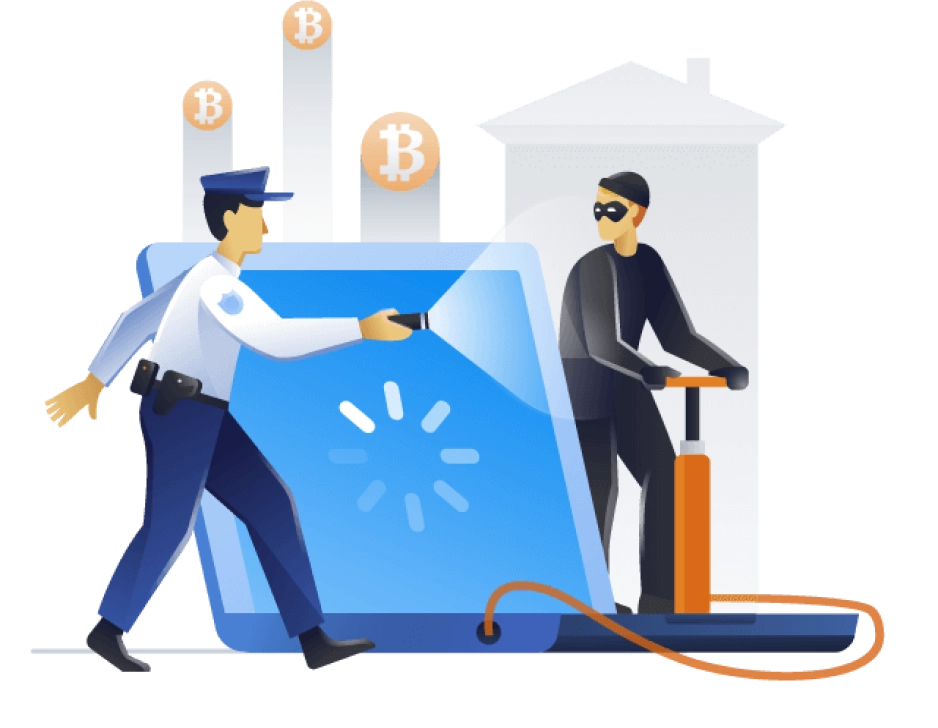
Cryptomining Blocker software
From $49.99 $34.99 per year
Stopping illicit miners
The boom in cryptocurrencies and their promise of easy money led to an explosion of cryptomining tools last year. The good news is that Acronis Active Protection, our machine-intelligence-powered defense, keeps your system from being compromised.
Terminates cryptominers
Stops standalone cryptomining malware that is often packaged with ransomware and other threats.Alerts you to threats
Notifies you immediately when an attack is detected on your Windows PC so you can block it.Blocks future attacks
Updates the behavioral heuristics used to detect attacks so it recognizes new malicious miners.
Choose a cyber protection plan that meets your needs
Formerly Acronis True Image
Works On Multiple Platforms
Microsoft Windows
- Windows 11 (all editions)
- Windows 10 (all editions)
- Windows 8+ (all editions)
- Windows 7 SP1 (all editions)
- Windows Home Server 2011
Mobile operating systems
- iOS 12.0 or later
- Android 7.0 or later
Windows file systems
- NTFS
- Ext2/Ext3/Ext4
-
ReiserFS(3)
-
Linux SWAP
-
HFS+/HFSX
-
FAT16/32/exFAT
Apple macOS
- macOS Sonoma 14
- macOS Ventura 13
- macOS Monterey 12
- macOS Big Sur 11
- macOS Catalina 10.15
macOS file system
- APFS
- HFS+
- Core Storage
- FAT32
- NTFS (including Boot Camp)
Looking for help?
Frequently Asked Questions
What is cryptojacking?
With carjacking, a crook jumps in and takes control of your car. With cryptojacking, online criminals use malware to secretly use the computing resources of your system to mine cryptocurrency – which requires tremendous processing power to calculate exceptionally complex digital equations, called hashes. While the malware does not steal your data, it robs you of considerable system resources, slowing your computer’s performance and significantly increasing your energy use. Sometimes cryptocurrency mining malware is injected into your system, piggybacking on apps or running in the background hoping to go unnoticed. Other times the malware attacks via your web browser when you go to an infected website and runs as long as you are connected to that site.
What’s the best way and, if so how, to spot Bitcoin miner malware?
Since cryptomining demands a lot of processing power, your CPU will be asked to work overtime. If you want to test a PC for mining malware, open your system’s resource monitor (Task Manager for Windows, Activity Monitor for Macs) to see if the CPU use is unusually high. If you’ve closed all the apps on your system and the CPU is still in overdrive, or if CPU use spikes when you visit a specific website, then you may have a cryptominer at work.
How to stop mining malware?
Since there are two types cryptominers – browser-based and injection-based – you need to take steps to prevent both types of attacks. For browser-based attacks, the first thing is to determine if your preferred web browser already has an extension available to stop bitcoin mining. Malware detection solutions are available from most popular browsers (e.g. Chrome’s No Coin), and there are plenty of open source extensions available as well.
In the case of injection-based attacks that load the malware onto your system, you’ll need a bitcoin miner scanner. Acronis Cyber Protect Home Office (formerly Acronis True Image) includes an AI-based cryptomining blocker as part of the integrated Acronis Active Protection technology. So not only do you get the backup and anti-ransomware solution you need to protect your data, your system has a built-in defense against cryptominers.
Sorry, your browser is not supported.
It seems that our new website is incompatible with your current browser's version. Don’t worry, this is easily fixed! To view our complete website, simply update your browser now or continue anyway.

